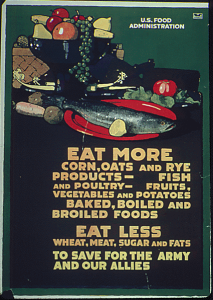Even if you’re not a history nerd, you’ll want to download our latest free handout – the history of nutrition timeline. The link is permanently located at the top of our Nutrition Month Theme Page. It’s so interesting to see how our field has evolved from the early 20th century to now. Here are some things that stand out to me:
- The first half of the 20th century was pretty much dedicated to the discovery and study of micronutrients, with vitamin B1 (thiamine) being the first discovered in 1910, iodine added to salt in 1924, vitamin D added to milk in 1933, and flour enriched with vitamins and minerals in the 1940s. By 1950, all the vitamins had been discovered.
- Introduced in 1911, Crisco was the first manufactured food product to contain trans fat. It wasn’t until 2015 that the U.S. government determined that trans fat is unsafe.
- The Clean Plate Club wasn’t something invented by nagging parents! It was an actual government campaign to get citizens to not waste food during World War II.
- MyPlate, which launched in 2011, has plenty of predecessors: the Basic Four in the 60s and 70s, the Food Wheel in 1984, the Food Guide Pyramid in 1992, and MyPyramid in 2005.
Download the timeline today and let us know what stands out to YOU!







